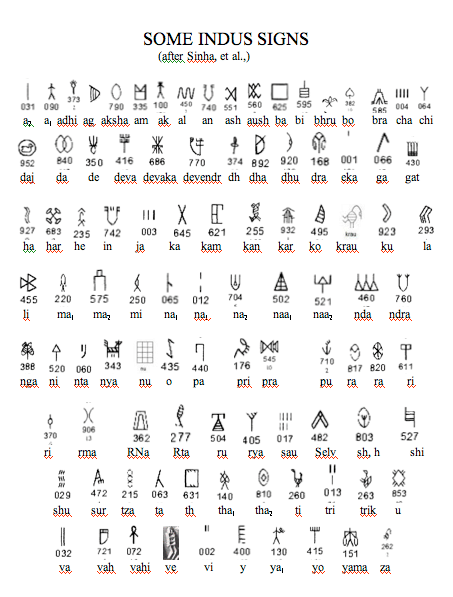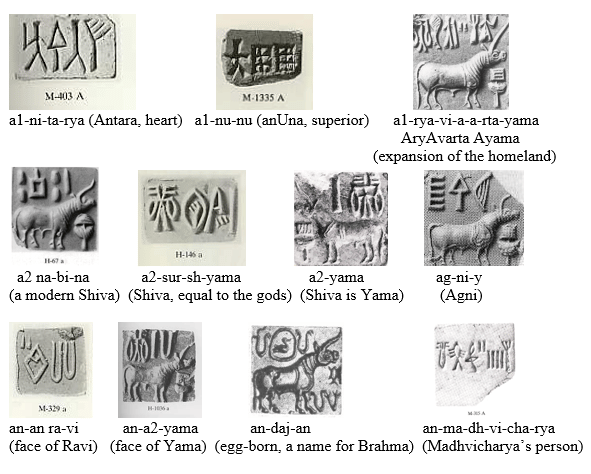Culture
Cracking The Indus Script: A Potential Breakthrough
Suzanne Redalia
Apr 25, 2016, 10:06 AM | Updated 10:06 AM IST
Save & read from anywhere!
Bookmark stories for easy access on any device or the Swarajya app.


Back in the 1970s, my family lived in southern California. The infamous smog there often caused school closings in summer. I can recall walking home through the caustic, murky air, choking, eyes streaming with tears. Much of the time we couldn’t go to the beach, go hiking, fishing, or picnicking.
My way of coping with summer vacation was to check out five or more hardback books, usually non-fiction, from the local library. I would hole up in my bedroom and just read. One week I brought home John Chadwick’s The Decipherment of Linear B.
This book was an account of amateur epigrapher Michael Ventris and his successful efforts to decipher the unknown writing system on clay tablets found in an ancient ruined palace on the island of Crete. The book was very inspiring and reading it changed my life forever. How? At the back of the book, there was a section describing other undeciphered writing systems, with a few photos of Indus seals.
I resolved to decipher Indus script, and at once made a failed attempt and annoyed the family by talking about it. They had no interest in India or ancient writing.
Skipping the last two years of high school, I got into UCLA by virtue of high SAT scores. Anthropology was the major I settled upon, with a minor in linguistics, but instead of taking linguistic theory classes, I learned languages. After graduation I had to go find work, there was no money for graduate school. A variety of jobs followed, and marriage, and a child. I didn’t forget about Indus script, but it was on the back burner, and Indus script study materials were hard to find.
Decades later, searching for topics of interest on-line, I decided to look into Indus script once more. Surely someone had deciphered it after all this time? What I found was that aside from publication of the Corpus of Indus Seals and Inscriptions books by the University of Helsinki, no progress had been made. The year was 2010. I began reading articles at harappa.com and sites of would-be Indus script decipherers, hoping to find some sound advice from experts and authorities.
One article advised hopeful decipherers to compare Indus Script signs to Brahmi script and Linear Elamite script:
Brahmi inscriptions in both north and South India had already been dated from the Iron Age and deciphered, they were later than the Bronze Age Indus script examples.
Linear Elamite was a writing system from ancient Persia, contemporary with Indus script, and resembling it strongly. There was a bilingual monument called the Table of the Lion in the Louvre museum, in Akkadian, a known writing system, and with the same text in Linear Elamite, still undeciphered.
Because of this bilingual monument, scholars gained knowledge of the sound values for a handful of Linear Elamite signs. Already having compiled a list of Indus script signs from examples of Indus seal photos at the website of Dr. Srinivasan Kalyanaraman, I compared Indus signs to Linear Elamite, and found matches; a broken line (na) and a triple S (shu). Then I compared Brahmi script to my Indus sign list, and was shocked to find more than a dozen similar or identical signs; a, o, ka, ga, da, dha, ja, nya, tha, ta, tha, pa, ba, ma, la, ya, and sa.
This gave me quite a few tentative sound values to work with. There were some Indus seals with the same inscription; fish, arrow. I knew that the Indus fish sign probably had the value of meen or ma, based on Dravidian or Indo-Iranian words for fish. Assuming I was looking at some Old Tamil sort of name, I went to babynology.com and looked for two-syllable names beginning with meen/ma, in the Tamil section.
There I found the name Mani, (which means jewel), and was also in the Sanskrit name section.
So I found the sound value for the arrow sign, a very common Indus script symbol.
Another set of seals had a three sign inscription; broken line, fish, broken line.
After looking up the word namana online, I found that it meant greetings. The only problem was that namana was Sanskrit, and the experts agreed that Indus script probably encoded a Dravidian language, with Indo-Iranian languages not a possibility.
Time passed. After about three weeks of eyestrain and butt pain from sitting for many hours gazing at the screen, I had the majority of the more common Indus signs assigned sound values. The sign list looked something like this:

I wanted to share my findings with the world, so I started an Indus script page at Piczo, which got vandalized and abandoned. More Indus seal photos became available as I got a copy of volume one of the Corpus of Indus Seals and Inscriptions and scanned them into my files.
The two other volumes followed as they became available to me. I posted on Facebook and Wikipedia asking for help with the translations. An online friend, Uschi Ringleb, directed me to Cologne University’s online Sanskrit/English dictionary.
The manuscript became a book called Indus Script Dictionary. I gave away and sold copies of this book, hoping for feedback. I made it into a CD, to reduce the cost of mailing it to India, where most of the interest lay.
But you’re probably wondering whether any of this has anything to do with you, personally. It does. If you have a common Indo-Iranian (Sanskrit, Prakrit) name, you may find that it is on an Indus seal, encoded in Indus script. Here are some examples:

While the above analysis is not a peer-reviewed work, Swarajya has chosen to publish the same in the interest of sustaining a dialogue on Indus valley civilisation.
Suzanne Redalia Sullivan graduated from UCLA in 1976 with a bachelors’ degree in anthropology. She lives in California and has a blog about undeciphered writing systems at Quora.




